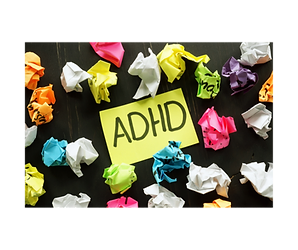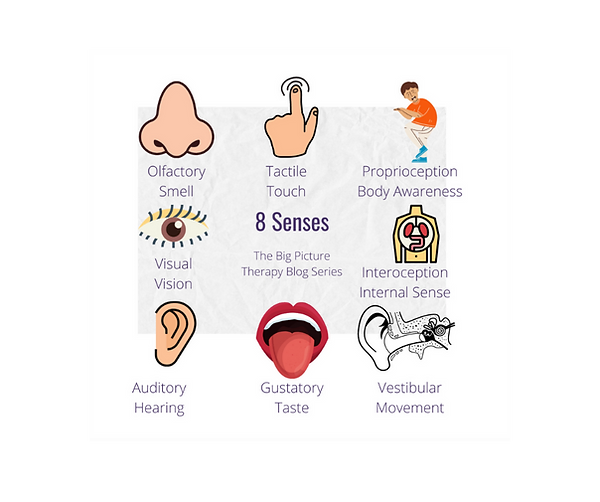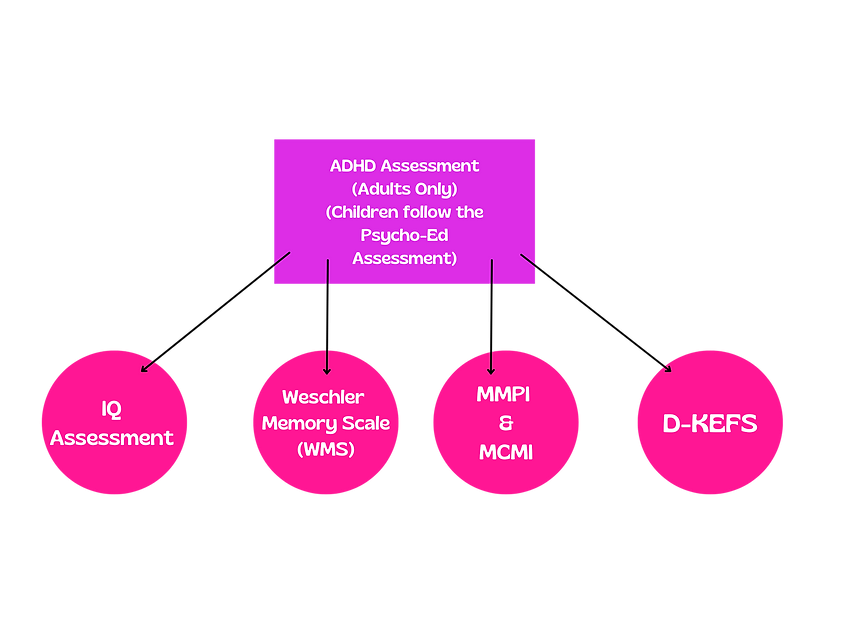Only boys have ADHD and they will grow out of it.
Adults don’t have ADHD.
Your child behaves that way because you don’t discipline them or you’re a “bad” parent.
ADHD is over diagnosed.
ADHD is experienced by both males and females and isn’t caused by bad or lazy parenting.
ADHD presents different in girls than in boys, as the symptoms are different.
ADHD is a complex neurobiological condition caused by brain differences.
“It is a lifespan disorder with the majority of children with ADHD continuing to struggle with symptoms as adults. ADHD also runs in families with a heritability chance of 57% for a child if a parent has ADHD, and a 70%–80% chance for a twin if the other twin has ADHD (Barkley 2015)”- CHADD Website.
If you have ADHD as an adult, you will have also had it as a child, although it’s often not detected until adulthood.
reports about getting easily distracted to struggles with romantic and social
relationships. These things may have impaired your life, prompting you to
perform inconsistently and struggle to keep jobs.
You might find it difficult to complete tasks, get upset easily over minor issues, and regularly experience intense feelings of frustration, guilt or blame.

this can be an extremely exhausting experience. The good news is, there are
things you can do to take control, regulate your emotions, and move forward
with your life.
Untreated ADHD can lead to anxiety and depression.

“Possible explanations for increased diagnostic rates include improved awareness about ADHD among healthcare practitioners and parents, more screenings by pediatricians and other primary care givers, decreased stigma about ADHD, availability of better treatment options, and more cases arising from suspected environmental causes such prenatal exposure to toxins or high blood lead levels.” CHADD
Executive functioning skills weaknesses are often present in individual with ADHD. Dr. Russell Barkley is an research and expert in the field of ADHD.
An initial consultation is carried out with one of our psychologists. This consultation will go through a complete developmental and medical history and is completed over the phone.
ADHD is a developmental disorder therefore in order to be diagnosed, a history of ADHD symptoms needs to be confirmed prior to the age of 12 years. Hence a complete history of development needs to be understood to ascertain whether the issues are developmental ADHD, or there is another cause behind the attention concerns (which has made attention problems arise later in life).
Concerns will be discussed regarding the following areas:
Attention skills
Executive planning and organisation
Vocational skills (adult)
School concerns & learning issues(child)
Social development & social skills
Learning skills & academic history
Psychological state & history
Behavioural concerns
Sleep
Energy levels & fatigue
Visual skills
Hearing
Motor skills & development
Language skills & development
Sensory processing
Medical history & neurological injury
Nutrition & digestive concerns
At this stage we will determine what formal ADHD assessment is going to be required. All assessments are individually designed according to your areas of concern, however we do have a core ADHD battery that we will perform (see below) We do all the formal processing assessments at our centre, if issues are noted with a potential sleep disorder, a hearing issue or other health issues such as anaemia, you may be referred back to your family doctor to rule out these problems.
Part A – Psychology
In order for ADHD to be even considered as a diagnosis according to the international benchmark of diagnosis (DMS-5), a minimum of 6 criteria for inattention symptoms &/or 6 criteria for hyperactive/impulsive symptoms need to be met, in TWO OR MORE areas (e.g.., home, school etc). As part of every assessment, we screen for ADHD with various rating questionnaires from different people.
Preschool: For preschoolers, we obtain questionnaires from both the parents & preschool teachers. They cover not only the ADHD criteria but also other emotional, behavioural and social issues. They also cover the criteria for Autism Spectrum.
School-age: For school-aged children, we obtain both parent and teacher ratings. these include not only ADHD ratings but also a comprehensive screening of co-morbid disorders such as depression, anxiety disorders, oppositional defiant disorder, autism spectrum. We also have a comprehensive screening of executive functioning. Where applicable we also have the student complete self-ratings.
Adult: For adults we have them complete both adult ADHD rating scales as well as ratings of executive functioning. Where the patient feels comfortable, we also like to have another person rate the individual.
Attention testing (ages 5-adult: note the precise tests differ by age):
Visual selective attention
Auditory sustained attention
Visual sustained attention
Switching attention
Divided attention
Impulse control (to auditory information)
Impulse control (to visual information)
Visual attention span
Auditory attention span
Executive Functioning:
Planning (open-ended task)
Planning (sequential task)
Time management
Preservation
Strategy generation
Learning/Academic Assessment:
It is important for learning/academic assessments to be completed as part of an ADHD assessment. ADHD is the most common neurobiological disorder that exists with a learning disability. “ADHD affects between 5-12% of the population or about 1 or 2 students in every classroom. ADHD is the most common disorder that co-exists with learning disabilities, but is not considered a learning disability. Many individuals who have ADHD also have learning disabilities, so assessment for LDs is important if there are academic difficulties.”
Memory (ADULTS):
If issues are noted with significant levels of memory problems, formal memory testing may be recommended. Most of the time issues with memory are more related to issues with attention processing and encoding of the information, rather than true memory retrieval. That is, the information was never properly laid down in memory stores in the first place. However, for people who are highly forgetful the following tests may also be recommended: Visual immediate memory (memory encoding), Verbal immediate memory (memory encoding), Visual delayed memory (retrieval), Verbal delayed memory (retrieval), Visual recognition memory (retrieval vs encoding), Verbal recognition memory (retrieval vs encoding).
Part B – Occupational Therapy Assessment (Adult & Child)
Most ADHD assessment do not include an understanding of sensory processing, which can be a disservice to those who have ADHD. Our assessments our different. Our occupational therapist (OT’s). are trained in assessing and provided interventions for ADHD and various areas where indivisuals may struggle.
“Sensory processing disorders are impairments in responding to sensory stimuli such as impairments in detection, modulation, or interpretation of stimuli. Sensory processing problems impact the responses of children to sensory events in daily life”( Ghanizadeh, 2011). Greater research and understand into sensory processing is demonstrate that the child/adult sensory experience can lead to emotional and behavioral struggles. It is important that the sensory world is evaluated to prevent or decrease the susceptibility to emotional and behavioural concerns.

Our OT’s will complete their own clinical interview with the parents, adult, and child to gather an understanding of how the client experience the sensory world. You may feel that some questions that are being asked are repetitive. Please remember that we are all trained differently we are looking and trying to understand behaviour from the lens that we are trained in.
Our OT’s will complete a formal assessment to determine the sensory experiences of the individual and provide tailored recommendations for each client in the report.
Level Up’s goal is to ensure that we are supporting each client in their journey to emotional health and well-being. Our team collaborates with the client and one another, to ensure recommendations support your growth and goals.
(Not included in stated fee and is recommended on an as needed basis)
Visual processing (If required by the occupational therapist) (NOT included in overall fees)
If issues are noted with vision such as skipping lines when reading, having problems maintaining eye contact with visual tasks or other people, seeing fine details, missing social cues, struggling with remembering visual information etc., visual assessment will also be conducted.
Higher level visual processing will also be assessed including: Visual discrimination, Visual memory, Spatial skills, Figure ground, Form constancy and Visual closure.
Auditory processing (If required by the speech and language pathologist) (NOT included in overall fees):
If issues are mainly noted with attention when listening to information, particularly when there is background noise, the primary issue may be one of auditory processing rather than a true attention deficit. Hence tests of basic auditory processing, auditory figure ground will be screened. If issues are found referral to an audiologist may be recommended.

What is a Learning Disability?
Types of Learning Disabilities: The most common LDs that co-occur with ADHD include:
The Overlapping Nature of ADHD and Sensory Issues:
Attention-Deficit/Hyperactivity Disorder (ADHD) and sensory processing challenges (often associated with Sensory Processing Disorder or SPD) can coexist in individuals, and there’s growing recognition of the overlaps and interplay between the two conditions. While they are distinct disorders, there are some shared symptoms and common therapeutic strategies.
While ADHD and sensory processing challenges are distinct in terms of their root causes and primary characteristics, the interplay between the two can be significant. Understanding both conditions and their overlaps can lead to more effective interventions and support strategies.
Why Is a comprehensive assessment of my child or myself needed to just get an ADHD diagnosis?
Attention-Deficit/Hyperactivity Disorder (ADHD) is a complex neurodevelopmental condition characterized by persistent patterns of inattention, hyperactivity, and impulsivity. However, many of the symptoms of ADHD overlap with other mental health conditions, such as anxiety disorders, mood disorders, and learning disabilities. For instance, restlessness and difficulty concentrating could be indicative of both ADHD and anxiety. Likewise, impulsivity can be a feature of ADHD, bipolar disorder, and borderline personality disorder. Given this overlap, a superficial or limited assessment can lead to misdiagnosis, which can subsequently result in inappropriate treatment and management.
A comprehensive whole-person assessment is therefore crucial for several reasons:
In conclusion, given the symptom overlap between ADHD and other mental health conditions, as well as the multifaceted impact of ADHD on an individual’s life, a comprehensive whole-person assessment is essential. This approach ensures accurate diagnosis, effective treatment planning, and a more holistic understanding of the individual’s mental health landscape
https://chadd.org/
https://www.caddra.ca/
https://caddac.ca/
https://developmentaldoctor.com/adhd-resources/
https://www.additudemag.com/tag/download/
https://healthymindslearning.ca/rollingwith-adhd-for-parents/
Unmanaged and Untreated ADHD Report
https://www.russellbarkley.org/factsheets/Final%20ADHD%20Summit%20White%20Paper%20revised%2012-10-19.pdf
Video: Impact of Untreated ADHD:
https://podcasts.chadd.org/e/dr-russell-barkley-untreated-adhd-reduces-life-expectancy/
https://add.org/untreated-adhd-in-adults/
ADHD in Girls
https://www.additudemag.com/best-web-resources-for-adhd-women/
https://adhdgirlsandwomen.org/
https://caddac.ca/adhd-in-women-and-girls/
ADHD & Learning Disabilities
The Difference Between ADHD and Executive Functioning Issues (Understood.org)
E-Book: Executive Function 101 (Understood.org)
Learning Disabilities Association of Canada
Learning Disabilities Association of Alberta
For more information on ADHD assessments, contact our client relations team.